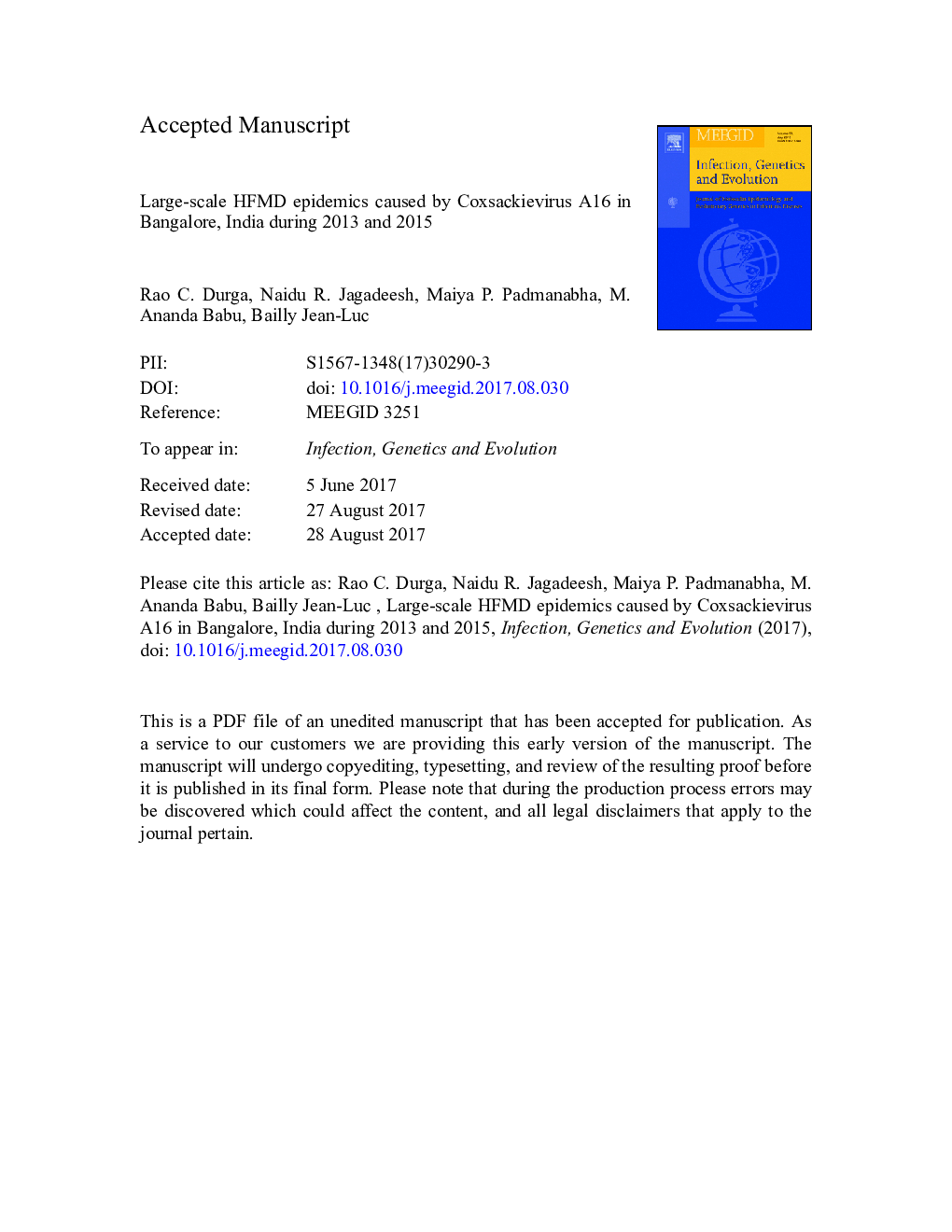| Article ID | Journal | Published Year | Pages | File Type |
|---|---|---|---|---|
| 5590364 | Infection, Genetics and Evolution | 2017 | 28 Pages |
Abstract
Hand foot and mouth disease (HFMD) is a relatively unreported disease in India. This study was undertaken to characterize the enterovirus type/s associated with two unexpectedly-massive epidemics that occurred in Bangalore, India in 2013 and 2015. Stool samples of 229 children with HFMD living in Northern and Southern areas of Bangalore were tested by RT-PCR; 189 (82.5%) were enterovirus positive. The Indian CV-A16 strains exhibited 98-99% sequence identity with those reported in France and China in the 5â² untranslated region. BLAST and phylogenetic analyses of complete genomes of representative Indian isolates revealed that the 2015 epidemic was predominated by an inter-species recombinant between CV-A16 and coxsackievirus B5. The 2013 epidemic was primarily caused by nonrecombinant strains. The CV-A16 strains circulated in India since 2007 and phylogeographic analyses indicated imported cases in France and China. In conclusion, CV-A16-associated HFMD epidemics should be recognized as an emerging public health problem in India.
Related Topics
Life Sciences
Agricultural and Biological Sciences
Ecology, Evolution, Behavior and Systematics
Authors
Durga C. Rao, Jagadeesh R. Naidu, Padmanabha P. Maiya, Ananda Babu, Jean-Luc Bailly,
